Determining Depth & Percentage of Burn Injuries
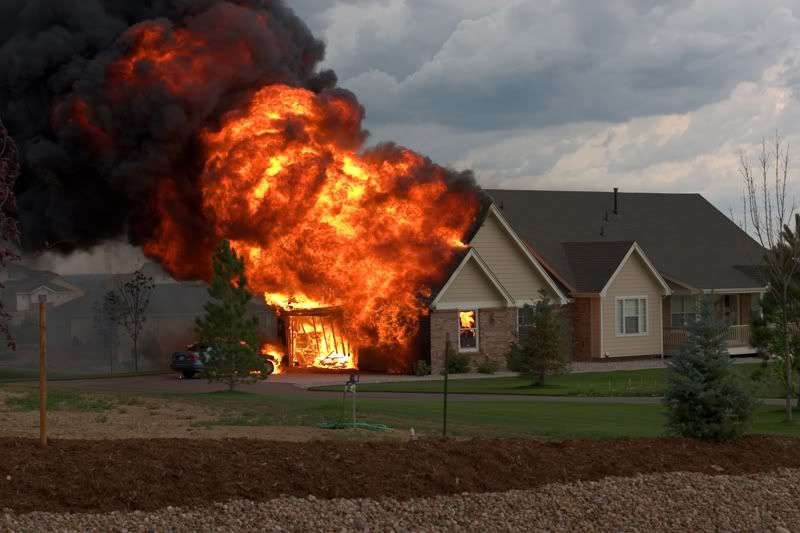
There are many ways that you can be burned as well as there being more than one way to make an estimation in regard to the percentage of burn injury from thermal or chemical burns. This discussion reviews the depth of burn and the three methods for determining the extent of burn injury using percentages.
TCSS, Mike from Santa Barbara
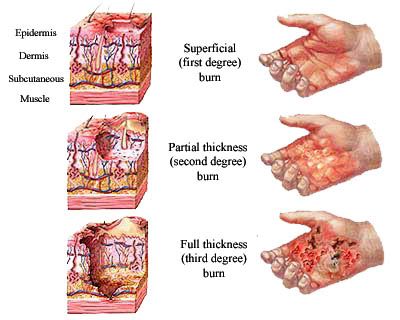
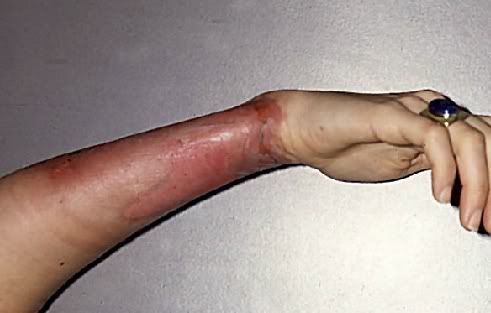
First Degree Burn

Second Degree Burn

Third Degree Burn
The Rule of Nines
The rule of nines is an anatomical and graphical tool that divides the total body surface area (TBSA) into segments that are multiples of 9%.
The percentages used for each body part are different between adults and children.
This is the easiest method to use for adults and children older than 10yrs.
Adult Rule of Nines Chart
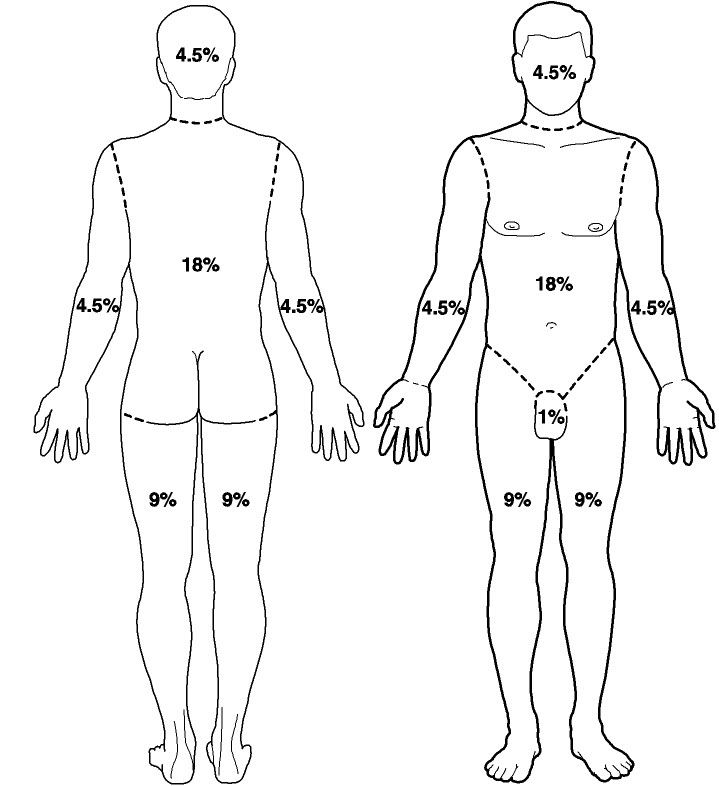
Child Rule of Nines Chart
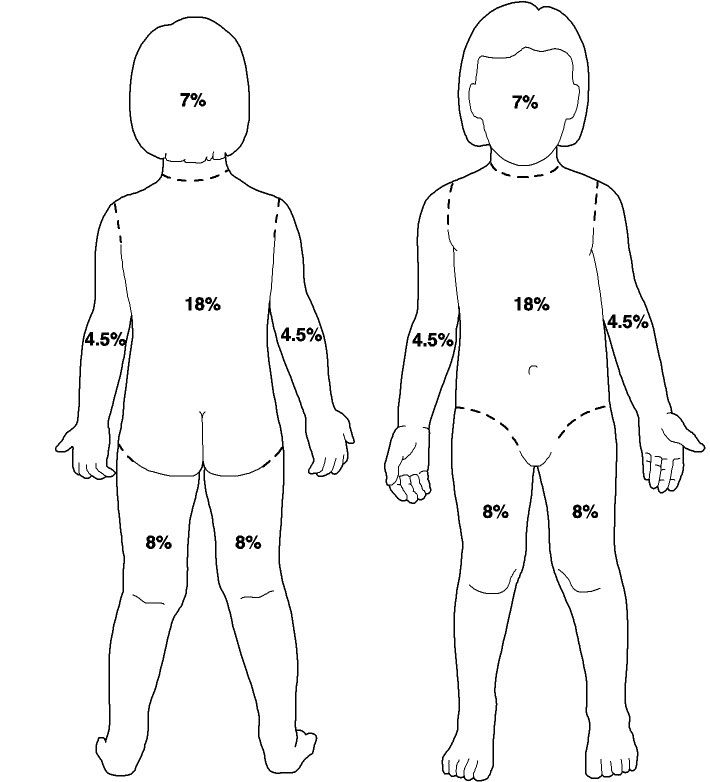
Infant Rule of Nines Chart

Lund & Browder Chart
The Lund & Browder chart is considered the most accurate of all the methods as it assigns a specific number to each body part.
This method is most often used to measure burns in infants and young children because it allows for developmental changes in percentages of body surface area.
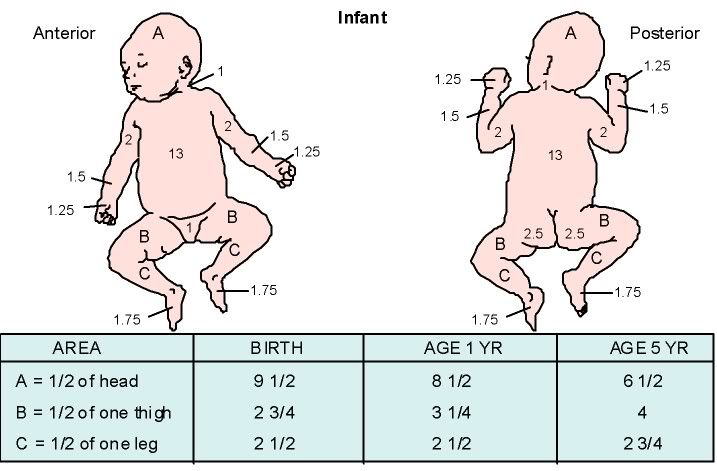
Lund & Browder Chart 5yrs - Adult:
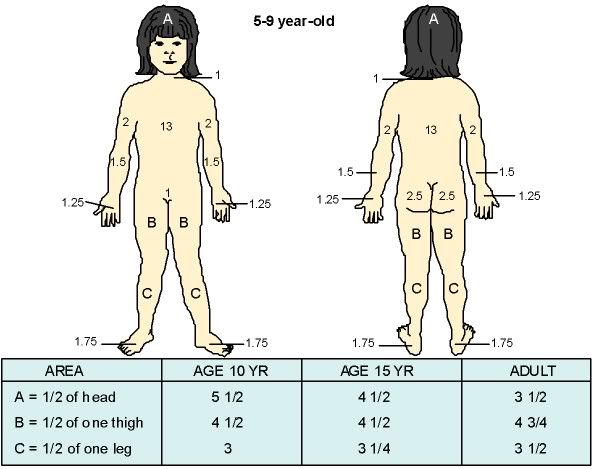
Palm Method
The palm method is a tool whereby the size of the patients palm is used as an indicator for specific percentage of TBSA.
The surface area of a patients palm equals approximately 1% of TBSA.
This method is particularly useful where the burn has an irregular shape or has a scattered distribution.
Tags:
Replies to This Discussion
-
Permalink Reply by T.J. on October 10, 2008 at 7:04am
-
Thanks alot Mike, thats very interesting, I never knew there were charts out there to determine this, I guess I thought the doctor had to tell you.
-
Permalink Reply by Justin Buck on October 10, 2008 at 6:05pm
-
wow thats very interesting i have never seen a diagram of a burn % on people
-
Permalink Reply by Brian Dumser on October 10, 2008 at 6:41pm
-
We're taught the Rule of Nines here, and I've seen the Palm Method before. I've never heard of the Lund & Browder Chart though, interesting! Great post as usual Mike. Stay safe!
-
Permalink Reply by Mike Schlags (Captain Busy) Retd on October 10, 2008 at 6:51pm
-
negative, it's up to us to make this call. I've provided these graphics for you to copy and put on a clipboard or something that you will have access to on a call. communicating with the burn center in regard to depth of burn, cause and percentage gets things rolling toward prepared patient care. all burns are bad but knowing what you are looking at and communicating that will make a big difference in how you are perceived and the level of professionalism you demonstrate...
-
Permalink Reply by Mike Schlags (Captain Busy) Retd on October 10, 2008 at 6:52pm
-
I suppose I may post something on the difference between electical burns, chemical burns or thermal burns... As mentioned to TJ, now you can clearly communicate what you see...
-
Permalink Reply by Mike Schlags (Captain Busy) Retd on October 10, 2008 at 11:30pm
-
Note: Added some additional graphics on the top of this page for reference to depth of burn. If you are powerpoint savy, either drag the graphics onto your desktop if you are a mac user or right click, save the photo if you are using a PC. Take these images and use them for developing your own in house ems training.
TCSS, Mike from Santa Barbara
-
Permalink Reply by debbie snacks on October 11, 2008 at 3:27am
-
Thanks Mike! We haven't covered burns yet in my EMT-B course but I'll definately be using this as a study reference. Super helpful - much appreciated!
-
Permalink Reply by Zachary Wolfe on February 9, 2011 at 1:32pm
-
I just lectured on this last week in Critical Care Paramedic, and the textbook we are using in the classroom, was actually using the theory of 4 degrees of burns.
Specialty Websites
Find Members Fast
Firefighting Videos
© 2025 Created by Firefighter Nation WebChief.
Powered by
![]()
Badges | Contact Firefighter Nation | Privacy Policy | Terms of Service